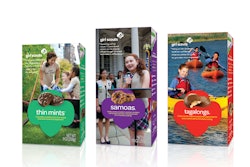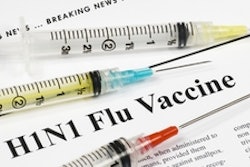
Packagers have long been champions of packaging, but they are not the only ones who want packaging to be well-regarded. Many food scientists, including the new president of the Institute of Food Technologists, John Ruff, also see its value, and they want the public to see it, as well.
Ruff wants his time as president of IFT (a food science educational organization) to be marked by a positive-image offensive for processed foods, to counter the widespread and largely mindless anti-processed food voices we hear today. Processed food is, largely, packaged food, so there is a lot of common interest here.
“We do not speak out sufficiently,” he told an audience of food techs in September. Food processing such as canning and heating, and including its related packaging technologies, has been crucial to recent human development, and the modern world now has a food supply that is the safest it’s been in history. But, he says, processing is plagued by higher-than-ever consumer concerns about safety.
It’s a perception battle that Ruff wants his colleagues in IFT to take on. The potential benefits to the food industry of an image makeover are many, not least being the easing of pressure from legislators and regulators who suggest onerous new legal burdens to attack problems that don’t really exist, and give too much weight to those problems without due consideration to benefits of products or processes.
This is a syndrome the packaging world knows well. Think for example of the history of legal measures aimed at solid waste that characterize packaging as mere garbage that uselessly fills landfills. It’s always been up to the packaging community to point to the safety, convenience, efficiency, communication, and other benefits of modern packaging, and to educate consumers and legislators alike about the thoughtful and sophisticated engineering that lies behind much modern packaging.
Ruff points to the food supply in developed countries—safe, diverse, affordable and abundant—but wonders if consumers really understand the role processing plays in creating it. Many consumers report an unfavorable perception of ‘processed foods,’ and link negative-connotation components like trans fats and sodium with processed foods.
Ruff says there is no good reason for the bad connotations. The perception that processing of foods and nutrient value are inversely related is simply not factual, and much of a consumer’s nutrient intake is provided by processed foods. “’Processed foods’ has become a generic term for poor nutrition, and that is just not correct,” he notes. Consumers who try to seek ‘natural’ foods (a term that is of amorphous meaning and some controversy) think the more natural a food, the less processed and the more nutrient-dense, and that’s just not so either, says Ruff.
Interestingly, Ruff cites statistics showing that the poor perception of processed foods doesn’t appear to translate into action: When consumers list what foods they avoid, about half list sugar and carbs, about a third list fats, oils and cholesterol, and as for ‘processed’ or refined foods: 1 percent.
As for the food supply in developing parts of the world, with rampant food insecurity, Ruff says food science and technology (i.e., processed foods) are going to have to be the source of solutions.
His positive message about processing carries packaging with it, too.
He says, “Nowadays, food processing and packaging technology are often inextricably intertwined. Aseptic processing (as shown in the “Day in the life of a Packaging Scientist” [video on www.ift.org]) is a great example of this. Advances in food packaging are helping improve global food security by reducing post-harvest losses and allowing us to make foods, like milk, safe and available in regions without refrigeration.”
A food itself and its packaging are frequently thought of as separate, “But today’s food package is more than a way to transport the product from manufacturer to consumer,” says Ruff. “It’s an integral part of the product bundle, providing key benefits such as shelf life or convenience in home and on the go. Microwaveable products depend on the packaging technology to deliver the product performance. We recognized this some years ago at Kraft [where Ruff worked for 36 years] and integrated our product, processing and packaging scientists into one team for each category to improve effectiveness. “
In addition to IFT, the leading packaging membership group, the Institute of Packaging Professionals, regularly sings the praises of packaging’s contribution to modern food science and safety. [Editor’s note: The author is General Counsel to IoPP.]
IoPP president Ralph Brandt is fully on-board with the processing/packaging link. He suggests, “The next time you go to the grocery store, consider if all that was available was non-processed, unpackaged food items. You quickly start to realize that many of the food choices we take for granted are not available without processing and packaging. Processed foods in tandem with well engineered packaging results in a sustainable food chain supply that benefits us all.”
Watch for the benefits of processed and packaged foods to be better defended in times to come.


























